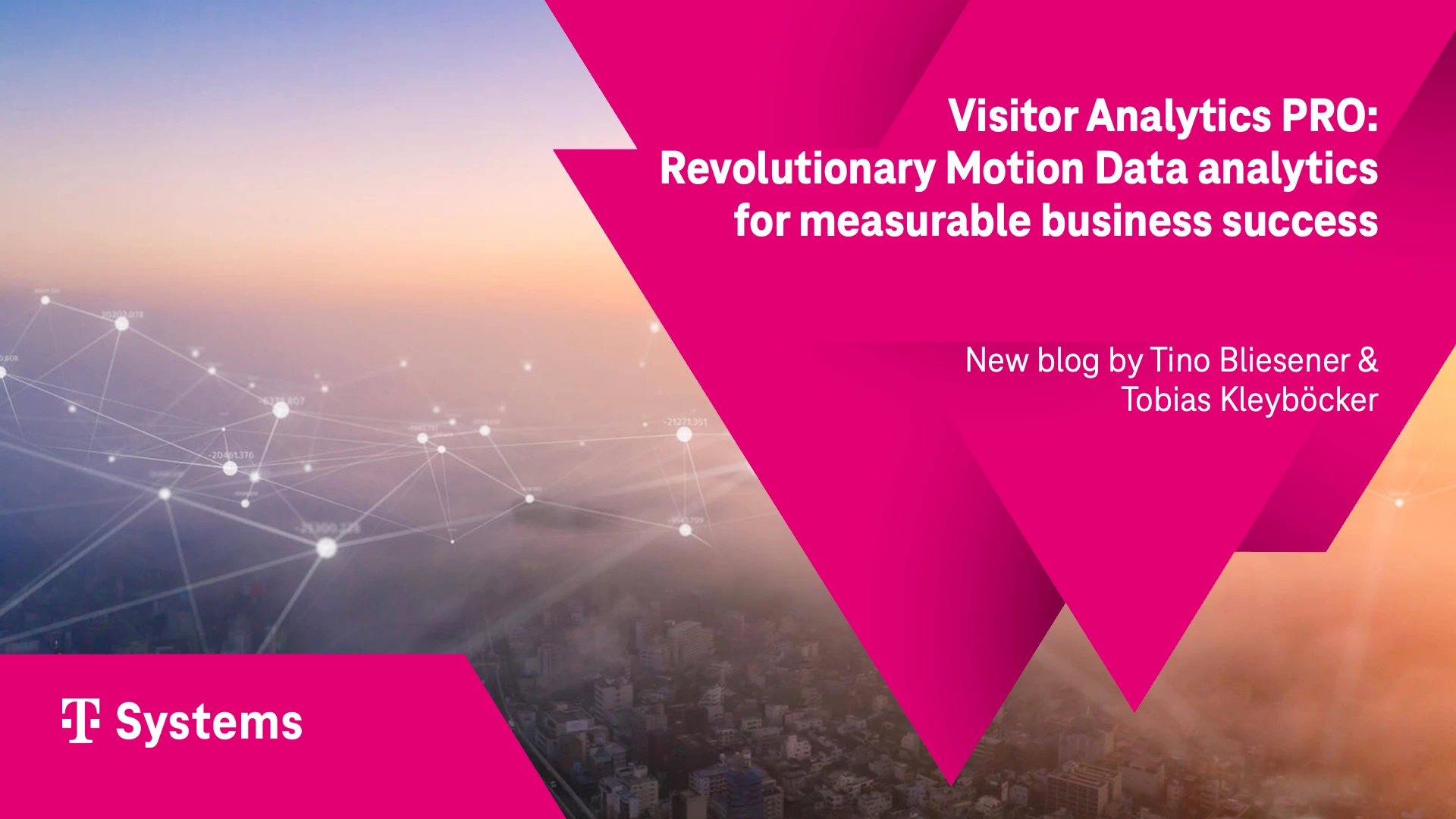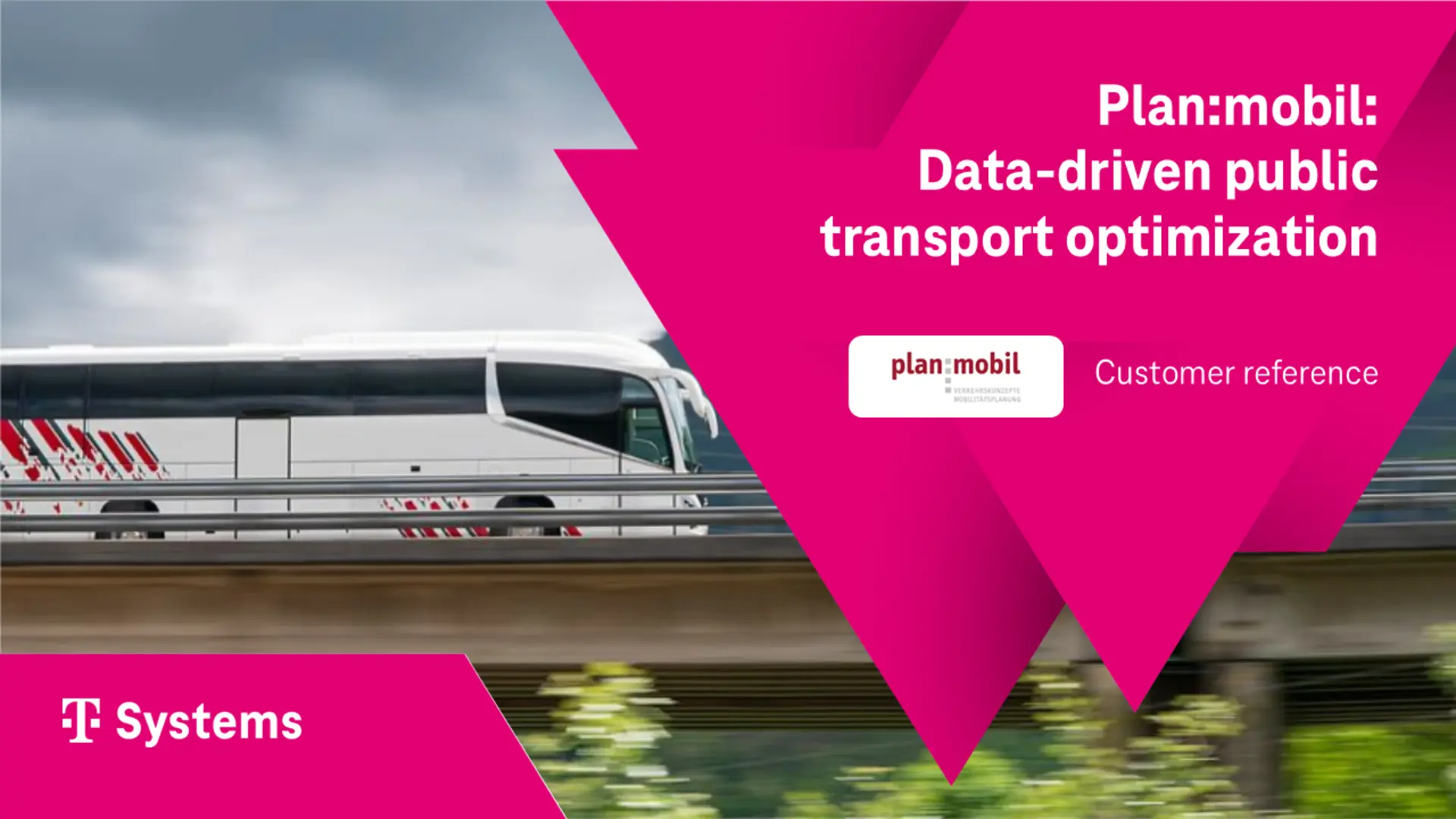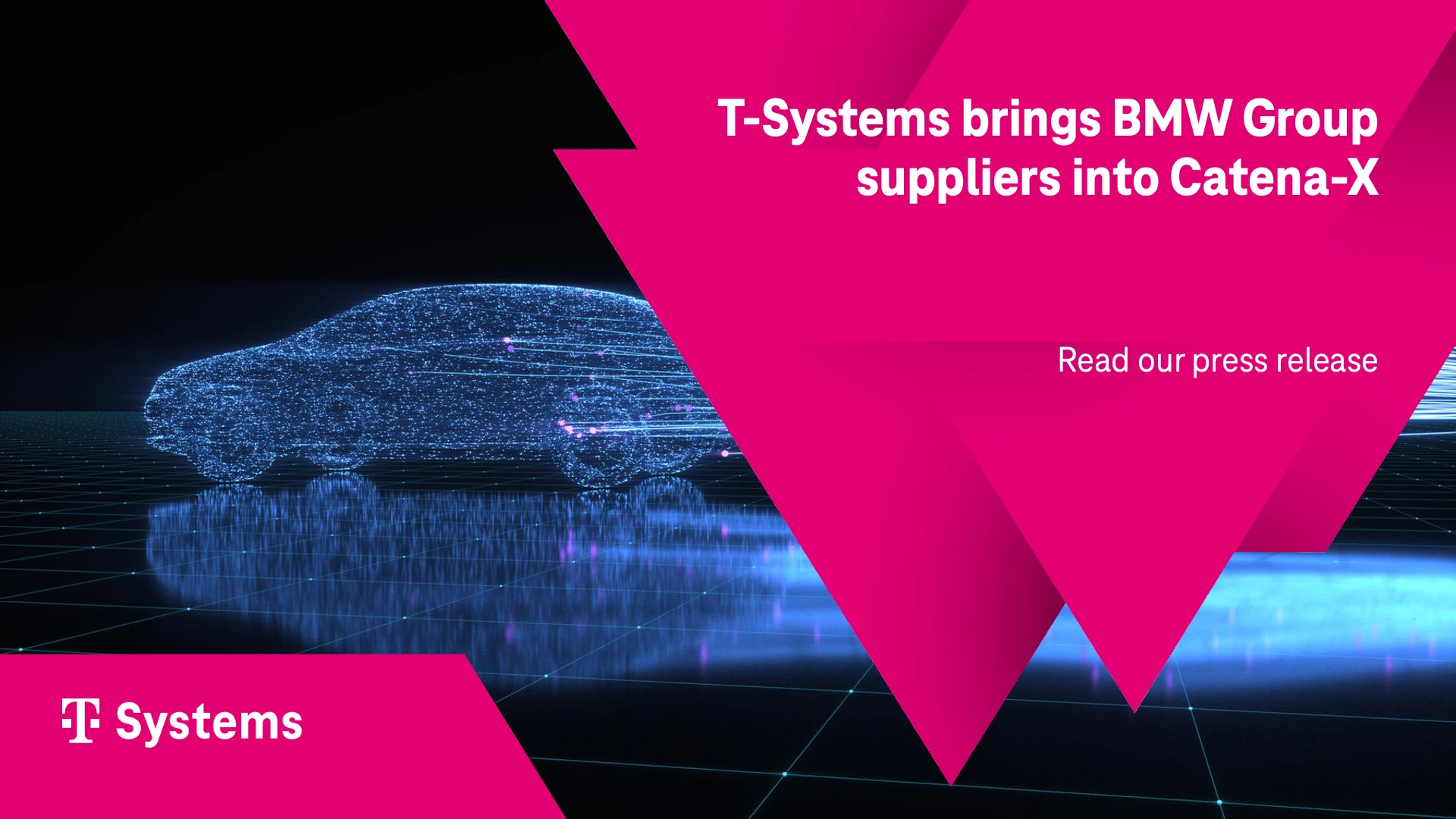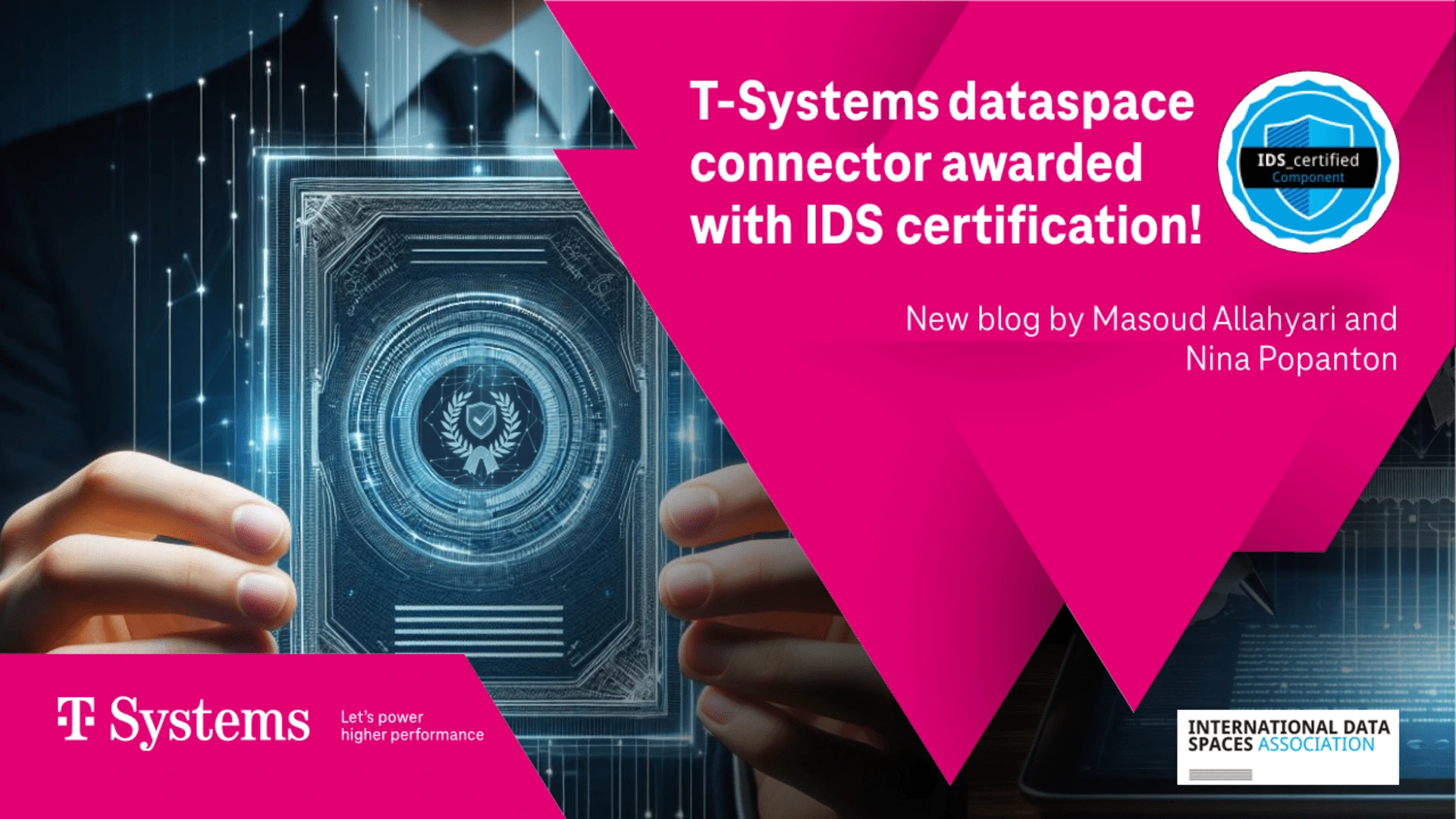Abstract
Ever wondered why we are missing out on getting from point A to point B more quickly in urban areas, such as with intermodal travel? Learn how the Telekom Data Intelligence Hub (DIH) team is using a next-generation European standards-based data sharing and exchange technology referred to as dataspace to speed up personal travel. This innovation is in line with the Web3 trend toward distributed and federated systems such as the internet. The key innovation and unique benefit of a dataspace is data sharing with sovereignty protection: you can share data but retain the power to control the rights to it. We use dataspace innovation to construct novel data chains involving customer data to enable a mobility super app for new mobility chains that include multiple modes of transport such as public transport for faster and more sustainable travel. The app was built as a demonstrator for planning purposes at RealLab Hamburg and tested with live data and visitors at the 2021 ITS World Congress in Hamburg. In 2022, RealLabHH received the “Innovation Award Real Laboratories” by the German Federal Ministry for Economic Affairs and Climate Action (link, see Figure 1).
Figure 1: RealLabHH is winner of the 2022 Innovation Award Real Laboratories by BMWK [German Federal Ministry for Economic Affairs and Climate Action]
RealLab Hamburg for sustainable and better mobility
Urban transportation is in urgent need of an upgrade. According to the German Federal Minister for Digital and Transport, Dr. Wissing, “our public transport system offers should be more comprehensible, more uniform, and therefore, more customer-friendly” (Hackenbruch & Latz 2022):
- “Uniform tariffs for offers across transport associations – this is also real added value for customers. […] People want to get from A to B, all the technical things that have to play a role in the background should be invisible to the user” (Hackenbruch & Latz 2022).
- Climate change requires a shift in mobility from individual trips in internal combustion engine vehicles to more shared and generally more sustainable travel.
- Mobility continues to wait for the digital dividend, the boost in consumer welfare – more and better products at lower cost – associated with a transition to digital technology. In other sectors, such as entertainment, the shift to digital, such as streaming music and entertainment movies, has increased consumer choice and convenience at lower cost.
The German government’s National Platform Future of Mobility (NPM) was initiated to facilitate such a shift in mobility (Gunko 2020). NPM aspired to be a “rocket ship” to achieve the climate goals of the “Energiewende” [energy transition] in 2050 (link). To achieve tangible results, RealLabHH was initiated as a living lab to move the debate into the field, to stop talking and start doing, to try out ideas, build prototypes, and test new technologies and business concepts in the real world under real-life conditions. RealLabHH has become a laboratory and sandbox for NPM recommendations (RealLabHH 2022; BMWi, link).
Figure 2: Modal shift commitment in Hamburg
Climate change requires modal shift and new mobility
Our Telekom Data Intelligence Hub (DIH) team became an integral part of RealLabHH, responsible for the “Data Interaction and Sovereignty” project package or TP2 (Schlueter Langdon 2020b; see Figure 7 for a presentation of TP2). To achieve the overarching goal of NPM, it was necessary to design an environmentally friendly transport system that performs better for citizens and the environment. The city of Hamburg even provides a quantitative goal post: it aims for a modal shift (“Verkehrswende”) to increase the share of trips involving public transport from 22 percent to 30 percent (see Figure 2). How can this gap of eight percentage points be closed? How can we be convinced to choose public transport over our personal cars? It is easy to see that it would require a better product! And first and foremost, that better product would have to be faster. Today, we are stuck in traffic jams (see Schlueter Langdon 2020a, for example). It is taking ever longer to get from A to B – and we are all paying the price: motorists, commuters, cities, the public, and the environment. Motorized individual transport has liberated citizens around the world. However, progress has shifted into reverse in many urban areas nowadays. Other improvements should include costs to make new mobility affordable and potentially more comfortable. Our TP2 project quickly focused on intermodal mobility, linking public transport with micromobility, such as electric scooters and on-demand shuttles, as numerous studies have demonstrated that such travel can be better (Schlueter Langdon 2021a), and in many cases up to 30 percent faster (Schlueter Langdon et al. 2021, Schlueter Langdon & Tuescher 2020). Furthermore, we hypothesized that novel dataspace technology can enable such an integrated, intermodal travel solution.
—> If you want to learn more about intermodal traffic with public transport:
Integrated Public Transport: Quantifying user benefits – Example of Hamburg, link
Figure 3: From one-to-many relationships to a super app with an all-in-one user interface
New mobility needs new technology to solve the problem of data sovereignty
It all sounds simple, doesn’t it? Well, it’s not! Until now, data interaction and data interoperability issues have prevented intermodal travel applications and a seamless user experience. Let’s explain. Several apps today provide access to different modes of transport in one user interface. Figure 3 illustrates the integration of user access into a single platform interface or super app. However, the real challenge lies beneath the user interface. A truly seamless mobility chain composed of multiple modes of transport requires a corresponding data chain in which all parties share relevant data about the customer. Why is this so important? Because many customers already have existing relationships and subscriptions with mobility providers and enjoy discounts or loyalty rewards, such as free rides, waived unlocking fees, first 30 minutes of use free of charge, etc. A platform that does not know about these benefits, and therefore, does not honor them, is not attractive – it’s as simple as that. No user interface, no matter how sophisticated, can remedy this fundamental flaw (see Figure 4). The success of mobility chains therefore requires a corresponding data chain; all parties must exchange data about the same customer. The problem is obvious: some travel options and providers are competitors (public transport, ride-hailing, electric scooters, etc.), and therefore do not trust each other. A dataspace allows parties that do not trust each other to trust a particular data transaction. It enables data sharing and the construction of data chains with sovereignty protection (see Schweichhart 2021, for example): Those who share data retain the power to control the rights to the data. Data chains are not limited to mobility, but are a solution to problems in many other domains, such as the automotive industry. For example, in 2021, the German government launched Catena-X (“catena” being the Latin word for chain), which explicitly focuses on data chains in the traditional automotive industry to enable novel applications, such as carbon footprint calculations or material traceability, which are also built on dataspace technology (Schlueter Langdon 2021b).
Figure 4: No benefits without sharing of customer membership data
One-click travel with the dataspace difference
So how to plan and orchestrate a trip across multiple providers without asking for user data multiple times? The TP2 solution draws on a tried-and-tested intermediary, a travel agent that interacts with different mobility providers on behalf of the customer, albeit digitally. Similar to the concept of Star Alliance, an alliance of several airlines that compete with one another, our travel agent can access data from many different providers and membership information about the customer. International Dataspaces (IDS) technology ensures data sovereignty by asking the end user for consent to act on their behalf and receive data from various mobility providers, and enforces it by translating consent requirements into data usage policies that govern how a dataspace and participants can access data resources. Dataspaces have become feasible with the IDS standard and first technology implementations. Technology, such as the connector, were originally developed by Fraunhofer (Otto et al. 2019). The connector is to a dataspace what a telephone is to a voice network. The IDS technology became a DIN SPEC 27070 standard (link) in 2021. That same year, the German and French governments elevated dataspaces to a pan-European level with the creation of Gaia-X (link). To demonstrate dataspace technology maturity and capabilities, the TP2 team developed both a dataspace and a travel planning super app on top of it, closely aligned with a first large-scale implementation of IDS technology in the Mobility Dataspace (Drees et al. 2021). And to make it a real test, we proceeded in two steps: First, we built the super app and dataspace demonstrator in RealLabHH because such a funding project makes it easier to access real-life data from competing mobility providers. Second, we used the ITS World Congress in Hamburg to give regular visitors and citizens the opportunity to use and explore the app in an open but controlled environment.
Figure 5: System architecture with calculator, recommender, profiler, and dataspace
Super app and dataspace demonstrator
Our travel system is a market-making system that matches supply and demand. It is composed of three layers. Figure 5 shows the layers of (1) user interfaces, (2) engines, and (3) data. End users interact with user interfaces, which are powered by engines, which in turn are fed with data. At its core, the engine layer consists of (a) a calculator, (b) a matching element and (c) a profiler. The central matching element uses machine learning or data science to match the available routes or seat inventory with the end users’ travel needs and preferences. This seat inventory is generated by the calculator, while a user profile is created by the profiler. The calculator consists of two subsystems: a regular routing engine and a customized micromobility engine. The former utilizes an existing solution – the Open Trip Planner (link), a Java-based open-source routing engine that calculates routes based on fixed routing (your bus route with stops) and static public transport timetable information (your bus schedule). The latter was custom built. While public transport routes are fixed and timetables static, micromobility is the opposite, it is free-floating. Part of the appeal of e-scooters, for example, is that they travel everywhere rather than on fixed routes and schedules. This required the addition of a subsystem to the OTP to support micromobility options including e-scooters, e-mopeds, shared cars, and shuttle services, as well as information about parking availability. Location and availability data for all micromobility options are accessed via APIs provided by the respective mobility providers. To achieve this, we cooperated with multiple companies, namely Conti, Free Now, Hamburger Hochbahn, Ioki, Moia, Sixt Share, Tier Mobility, and Voi. Static timetable information (e.g., train timetables) is retrieved via public portals and to some extent directly through mobility provider APIs.
Want to learn more about super app design with data sovereignty protection and user personalization?
—> Intermodal travel super app with agent system and dataspace: RealLab Hamburg implementation. Scientific Paper ID 1225984, 28th ITS World Congress Los Angeles, link
Figure 6: Digital twin, personalization widget, and travel map
Testing the new customer journey at the ITS World Congress in Hamburg
At the 2021 ITS World Congress in Hamburg, our team presented the intermodal trip planner to the public. For several days, visitors were able to test our super app using individual starting points and destinations. Our setup included a large, wall-mounted interactive touchscreen and mobile touchpad interfaces for our guests at the RealLabHH booth. Figure 6 shows the three user interfaces of digital twin for personal preferences, the widget with travel recommendations, and a map with routing alternatives. It was no surprise that the setup generated a lot of interest and attracted prominent visitors including German Federal Minister of Transport, Andreas Scheuer, and other decision-makers from the public and commercial transport sector (see Figure 7). It was exciting to see how the new technology, a dataspace with sovereignty protection, buried deep within our super app, came to life through a new user journey that takes travel planning to the next level of usability and an intuitive and personalized experience:
Imagine it’s early Monday morning, you are reading your newsfeed and suddenly a widget pops up. You completely forgot about your doctor’s appointment! Fortunately, your travel agent app has already figured out how to get you there. The widget shows you the top-three travel alternatives based on your preferences and subscriptions. After quickly browsing your choices, you decide to go take the tram
and replace the bus with an e-scooter because it is faster and there is a vehicle available – and the weather is lovely too. No need to worry anymore, just grab your jacket and head right to the doctor’s office. Once the appointment is done, it is time to get to work. You open your travel agent’s digital twin and confirm your preferences based on your travel history; sure enough, a widget pops up suggesting the top-three alternatives to get you to work.
Figure 7: Andreas Scheuer (Federal Minister of transport), Chris Schlueter Langdon (Deutsche Telekom), Henrik Falk (CEO, Hamburger Hochbahn) using the travel super app at the ITS World Congress
Teamwork: Telekom and UI – and a big thank you to Hamburger Hochbahn & team
Many people were involved in creating our intermodal travel super app. The core team consists of Prof. Dr. Christoph Schlueter Langdon (project and data analytics lead), Thomas Krebs (system architect), Nikhil Vinod Mallela (development engineer and data scientist), dual students and data scientists Tim Ganther, Lenny Hofmann, and Luca Löffler, as well as Jasmin Schubert (intern) – all from Deutsche Telekom Data Intelligence Hub (DIH); and the Urban Software Institute (UI) team comprising Stephany Borgert (UI lead), Gadi Lenz (UI Chief Scientist), and Lisa Brunzel (see Figure 8). UI developed an interactive vision demonstrator to showcase a broad range of intermodal travel business opportunities and user experiences; it also provided live parking data via a dataspace connection. The Telekom DIH team implemented a working dataspace and then designed, built, and implemented the intermodal travel super app demonstrator, allowing visitors to experience real personalized travel recommendations. This success would not have been possible without the support from Hamburger Hochbahn, Henrik Falk (CEO), Malte Auer, and the project team including Johannes Eckert, Denise Blazek, and Lena Agnesmeyer; and of course, our providers of critical data such as Deutsche Bahn, Conti, Tier, and Sixt.
Figure 8: The team from left to right, starting at the top with Chris Schlueter Langdon, Jasmin Schubert, Gadi Lenz*, Thomas Krebs, Lenny Hofmann, Stephan Borgert*, Luca Löffler, Tobias Zilesch (all Deutsche Telekom except *Urban Software Institute)
Deutsche Telekom is a launch partner of Gaia-X and has learned from pioneering dataspace implementations that having the right technology enablement and sovereignty governance are a critical driver for the success of data chains:
Winning the automotive race with data sovereignty – take a deep dive into dataspaces, T-Systems White Paper, part 2: (forthcoming) link
For an insight into the impact of data in mobility, please see our series on Mobility Analytics: link
Acknowledgement
This demonstrator development project in the RealLab Hamburg project as subproject “TP2: Data interaction and sovereignty” was funded by the Federal Ministry of Transport and Digital Infrastructure (BMVI) under grant agreement FKZ 01MM2016HH (“Verbundprojekt: RealLabHH – Reallabor Nationale Plattform Zukunft der Mobilität; Teilvorhaben: VRUDaten”).
References
Anastasia Gunko. 2020. NPM – National Platform Future of Mobility and Telekom. Blog (2020-08-28), Deutsche Telekom Data Intelligence Hub, Frankfurt link
Drees, H., D. O. Kubitza, J. Lipp, S. Pretzsch, and C. Schlueter Langdon. 2021. Mobility Dataspace – First Implementation and Business Opportunities. Technical Paper ID 909, 27th ITS World Congress Hamburg, link
Hackenbruch, F., and C. Latz. 2022. Regierung kündigt große Reform im Nahverkehr an – Verkehrsminister Wissing will Reisen mit der Bahn für alle attraktiver machen. Tagesspiegel (2022-07-07), p. 1
Kerinnis, D. 2020. Hamburg gibt den Takt vor. Integrierte Mobilitätsstrategie für den Hamburg-Takt. Hamburger Hochbahn, Hamburg: 22, link
Otto, B., S. Steinbuß, A. Teuscher, and S. Lohmann. 2019b. Reference Architecture Model Version 3.0 (April). International Dataspaces Association, Berlin, link
RealLabHH. 2021. Wir verändern Mobilität – Erkenntnisse des Reallabors Hamburg für eine digitale Mobilität von morgen. Abschlussbericht (2021-04), RealLab Hamburg, Hamburg, link
Schlueter Langdon C., 2021a. Dataspace Enabled Mobility. In: Mertens, C. et al. (eds.). Data Move People. Anthology (version 1.0, October), International Dataspaces Association, Berlin: 27-41, link
Schlueter Langdon C., 2021b. Catena-X with Gaia-X: Will dataspace be the word of 2021? Blog (2021-03-21), International Dataspaces Association, Berlin, link
Schlueter Langdon, C. 2020a. Stuck in traffic: How bad is it … do we age faster … how can we fix it? Blog (2020-08-12), Deutsche Telekom Data Intelligence Hub, Frankfurt link
Schlueter Langdon C., 2020b. Mobility with IDS: Adding the “N” in NPM to RealLab HH. Blog (2020-10-12), International Dataspaces Association, Berlin, link
Schlueter Langdon, C., and J. Eckert. 2022. Intermodal travel super app with agent system and dataspace: RealLab Hamburg implementation. Scientific Paper ID 1225984, 28th ITS World Congress Los Angeles, link
Schlueter Langdon, C., and B. Tuescher. 2020. Berlin digital twin: Yes, intermodal traffic is faster! Blog (2020-08-26), Deutsche Telekom Data Intelligence Hub, Frankfurt, link
Schlueter Langdon, C., N. Oehrlein, and D. Kerinnis. 2021. Integrated public transport: Quantifying user benefits – Example of Hamburg. Technical Paper ID 438, 27th ITS World Congress Hamburg, link
Schweichhart, K. 2021. Dataspace, sovereignty, supermarket: IT Director interview with Prof. Chris S. Langdon. Blog (2021-03-25), Deutsche Telekom Data Intelligence Hub, Frankfurt, link





































